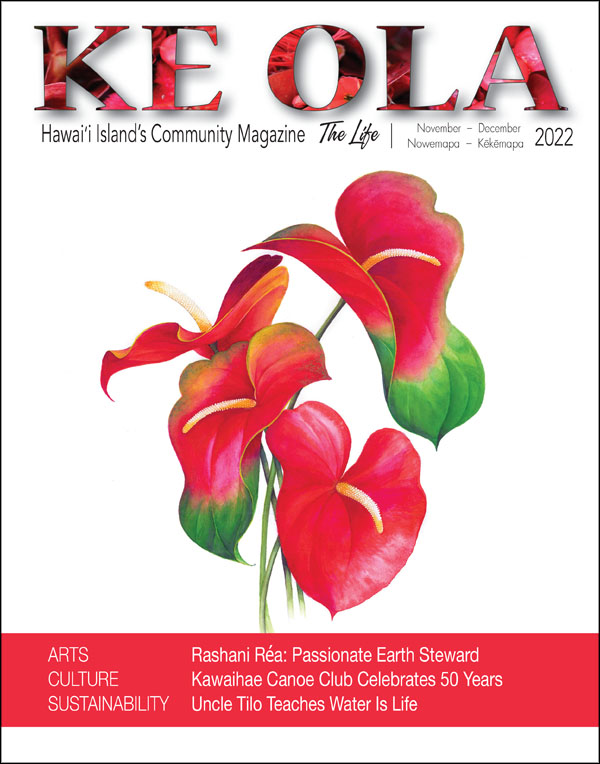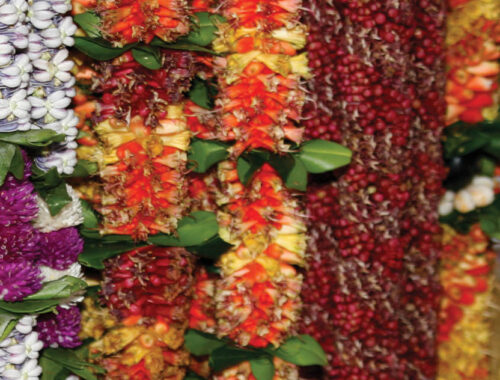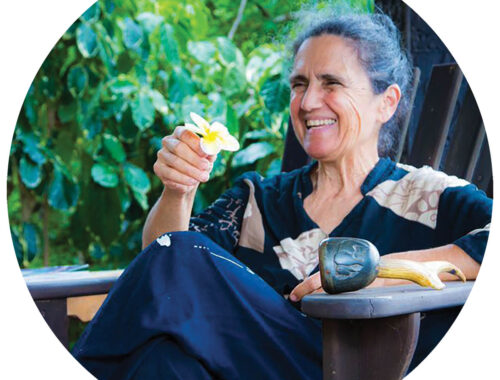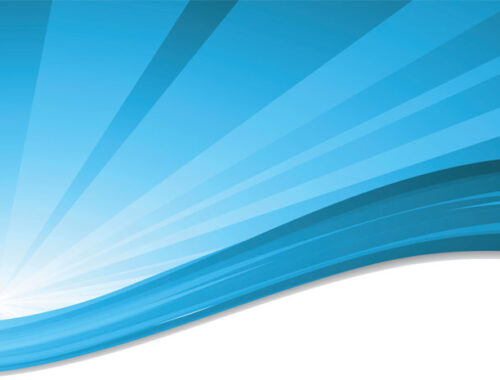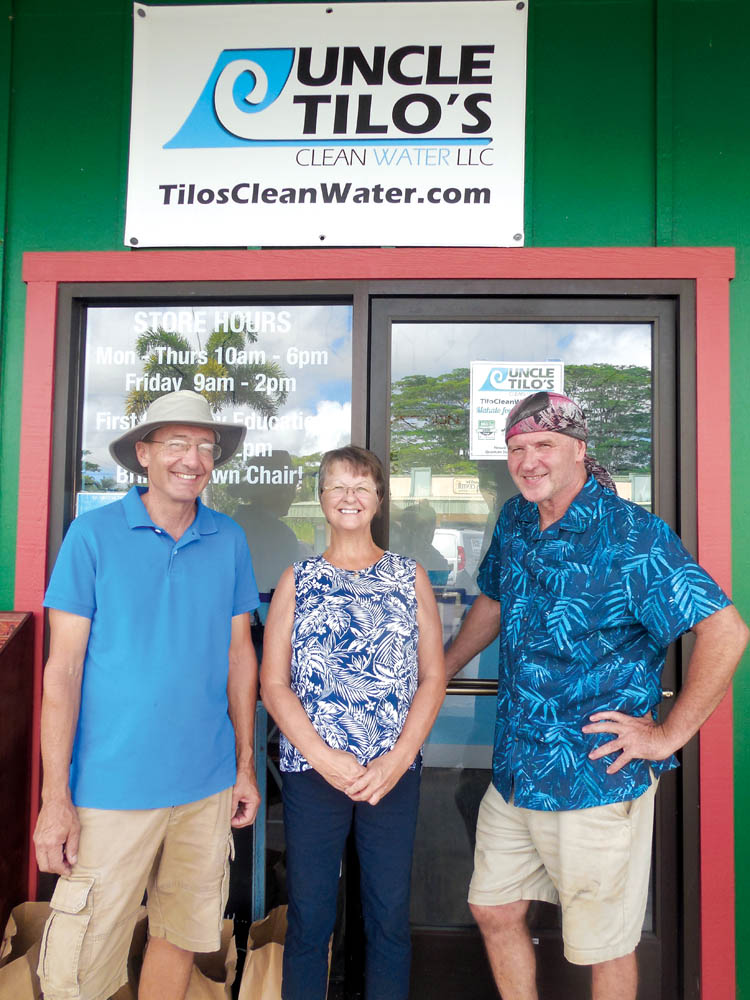
Uncle Tilo Teaches Water is Life
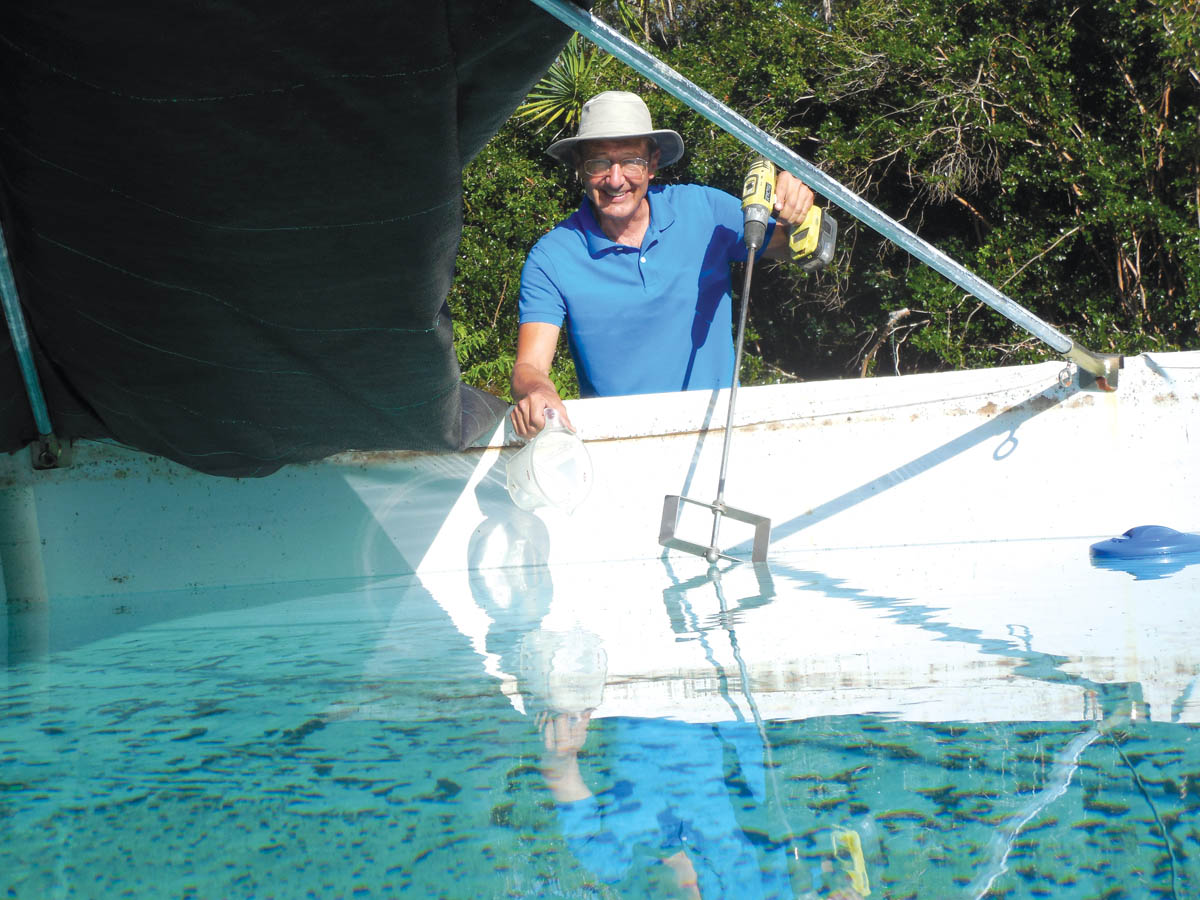
By Stefan Verbano
“The quality of your water is a direct link to the quality of your health.”
This is scribbled on a chalkboard hanging in the window of Todd and Archer’s shop in Pāhoa. It’s their business motto, and the inspiration for why the tiny storefront is crammed full of water filtration and treatment equipment, display racks of cylindrical, spongey-looking white filter cartridges, pH-balancing plastic capsules made to be floated in rain catchment tanks, and a preassembled floor model of a complete filtration system—with its array of valves and looping snake of PVC pipe—mounted to the wall.
Complete with chair and desk, there’s only enough space inside Uncle Tilo’s Clean Water for one or two shoppers at a time. This seems curious at first when considering Hawai‘i Island is home to the largest rainwater harvesting community in the United States, where some studies suggest nearly 100,000 people rely on around 40,000 privately owned rain catchment tanks for their primary water needs. However, after talking with the owners of the store for a bit, it becomes obvious…they do a lot of house calls.
The store is named after Todd Lolla, who goes by the nickname ‘Tilo,’ formed from his initials. On a Saturday morning, Todd is standing in the parking lot out front surrounded by a semicircle of people sitting in folding chairs. They’ve come from as far away as Ka‘ū to attend the free monthly water education class. It’s a well-rehearsed presentation about home water treatment, paused briefly partway through to pass out pencils and the 14-page booklet, “Rainwater Harvesting in Hawai‘i: Just the Basics.” He lectures largely from this text, pointing out to the audience a particular chart, graph, or an image of filtration and treatment equipment—as they gingerly flip pages and follow along.
The class is science-heavy. Todd goes into depth about concepts like pH adjustment, filter micron sizes, types of ultraviolet light treatment, and heavy metals testing. He incorporates subjects ranging from hydrology to epidemiology to engineering. Even with all the science jargon, he manages to keep it lighthearted, too. He’ll often ask via a show of hands, “who was brave enough to take a look inside their catchment tank before they came to class?” On some Saturdays, very few hands shoot up in response.
Todd draws on an entire career’s worth of experience from working as a water well driller and project engineer in the southwestern United States. Moving to Hawai‘i was meant to be a transition to a slower and more peaceful lifestyle, but it turned out his skills were in very high demand in his new home.
“Technically I’m retired,” he says. “So, I don’t want this to be a job as much as I want to be able to take my experience and my education and say, ‘Okay, it’s time to give something back, and this is what I can give.’ The educational component is our contribution back to this community, and rainwater just happened to be the thing we got attached to.”
Uncle Tilo’s—which celebrates five years in business this December—has put on more than 60 of these free classes, drawing anywhere from a handful of people to several dozen. Most have been held right there on the sidewalk in front of their store on the first Saturday morning of each month, when the marketplace is bustling with customers. County road workers in big white trucks come and go picking up plate lunch orders, and pungent wafts emanate from the fish shop next door. Other times Todd and Archer have taken their program on the road and looped around the island holding classes in community centers.
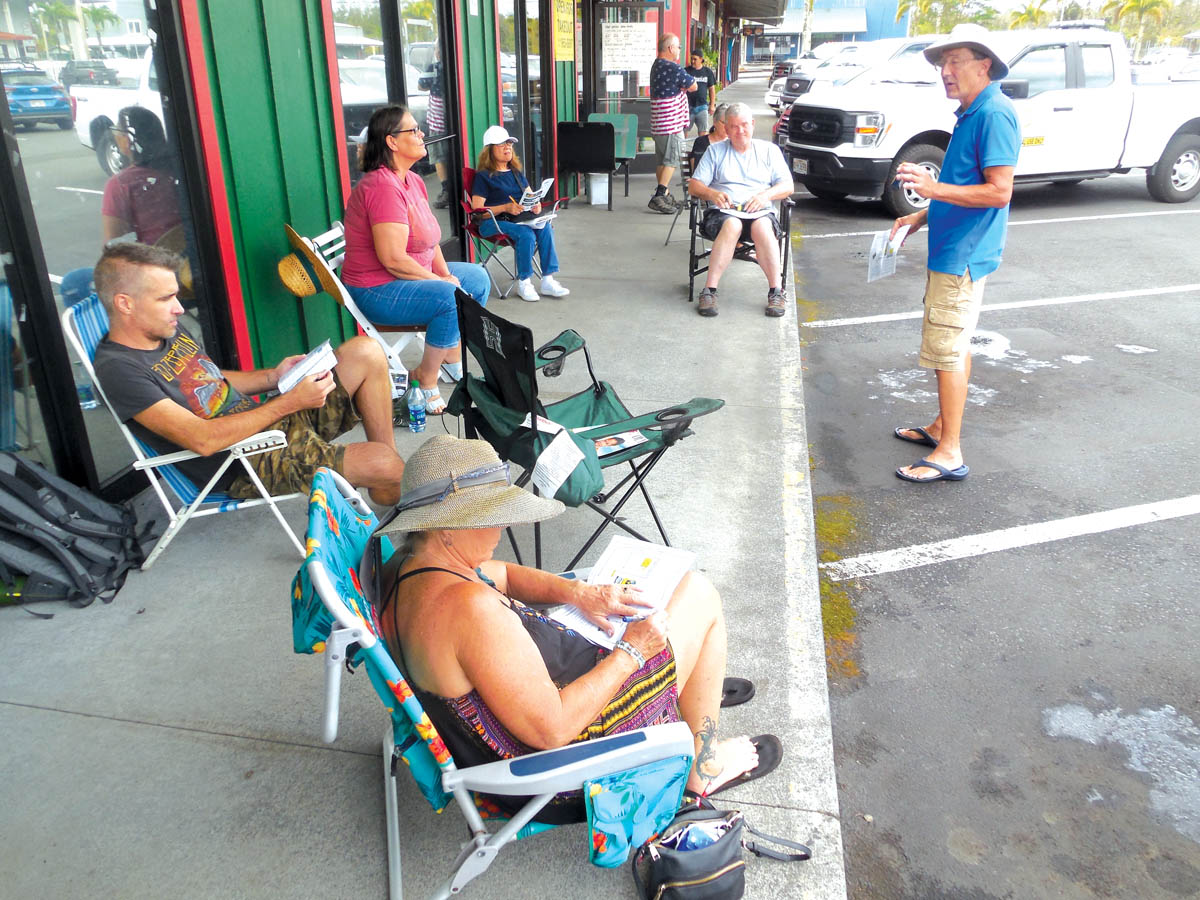
Tilo the Problem Solver
Usually, the most popular of these classes, Todd says, are unfortunately the ones being held in Hawai‘i Island communities actively experiencing water problems. “They’re concerned,” he says about a class taught a few years ago in the town of Ocean View that saw more than 60 attendees. “They know there are problems, they can see the discoloration in their tubs and showers and sinks. They realize there’s got to be something going on and they want to know what it is.”

The trouble in Ocean View stems from increased volcanic gasses from the ongoing Kīlauea eruption creating acid rainfall in communities downwind of the volcano. The very-low-pH water ends up in catchment tanks and is cycled through household plumbing where it corrodes copper piping and imparts the water with a sickly blue hue.
“They have to add some kind of a pH-correction to their system,” Todd says. “They have to add mineral beds with calcium carbonate in them to raise the pH of the water, to introduce some more minerals in there so that the water isn’t acidic. Back on the mainland, most of the problems there are the opposite—the groundwater is so hard and full of minerals that everybody is installing water softeners to try and get rid of it. We’re on the other end of the spectrum, so we’re always thinking about adding minerals to the tanks.”
The other, much more dangerous metal often leached by acidic catchment water is lead. “The lead is in our plumbing system,” Todd says. “Every house, every building has brass fittings, every faucet fixture is brass, every shutoff valve is brass, and the connectors at the pump are brass. Brass contains lead, so if you run acidic water through there it will dissolve some of that lead and carry it into the water.”
Thankfully, the solution to acidic water is simple—make it more alkaline and it won’t eat away at these metals as it makes its way to the tap. Other problems plaguing the Hawai‘i rainwater harvesting community have similarly simple solutions: keeping pathogens that cause illnesses like Rat Lungworm Disease, Staph infections, and Leptospirosis out of a catchment tank can be as simple as using the right ratio of disinfectant in combination with a suitable two-stage sediment filter. Some of Todd’s advice can seem like a no-brainer, too: pressure wash roofs, periodically flush out piping, cut the jungle back from structures. All of this, put in his reassuring and matter-of-fact tone, tends to put his listeners at ease.
“I see the lightbulbs going on all the time,” he says. “I get a lot of people who are grateful for starting the conversation. It gives them a lot to think about, and they now have the tools where they can do something and improve their situation greatly. There’s no more mystery.”
Archer’s Travels Bring a New Perspective
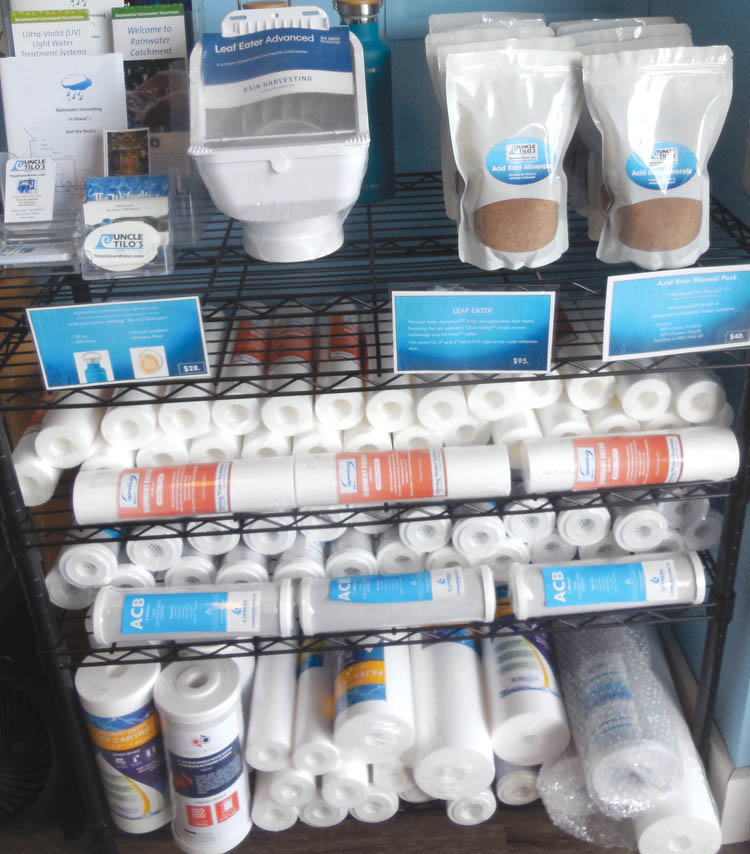
Prior to meeting Todd in Hawai‘i and starting the business, Archer had spent years traveling around the globe, living in intentional communities and getting a firsthand look at how access to clean water can affect quality of life. It was during these adventures that she coined the motto written on the store’s chalkboard today.
“When I went around the world, the water was so different everywhere,” she recalls. “Especially the communities living on rainwater. I’d ask, ‘Let me see your system,’ and they would say, ‘Oh no, no, no, we never look in there.’ And I’d say, ‘Why not?’ And they’d answer, ‘Because you’ll never take a bath again.’ So, then I would go into places where I’d say, ‘Let me see your rainwater harvesting system,’ and they would say, ‘Yes, come and see!’ The health of the people in those two communities were completely different, and I could see that.”
It was the lessons learned over the course of her travels, paired with Todd’s technical know-how and mastery of engineering, that laid the foundation for Uncle Tilo’s educational endeavors.
“His education and background came from being a well driller in the southwest desert, and I had this experience where I was exposed to diverse water systems, and to all these different qualities of water,” Archer says. “There had to be something we could do, if we were going to live here in Hawai‘i, to find a niche and give a gift to our community. And then it was clear— let’s start teaching people what you know. The water brought us together.”
Water can be an “intimate” subject, as she puts it, and there have been instances in the past where talking openly about it has made people sensitive, defensive even. She opens the classes by reassuring attendees that the purpose of their gathering is to educate and not to pass judgement.
“You don’t know what you don’t know,” she says. “But if we can teach you to ask the right questions, or to know what the language of what being a rainwater harvester is, then we’ve done our job. I tell people, ‘Look at our website. Read the education tab. Go out and look and see if you have these things in your tank. Then you can come to the class and ask specific questions. Bring us pictures of what you’ve got, and let’s talk about it.’ That is empowerment through education.” ❖
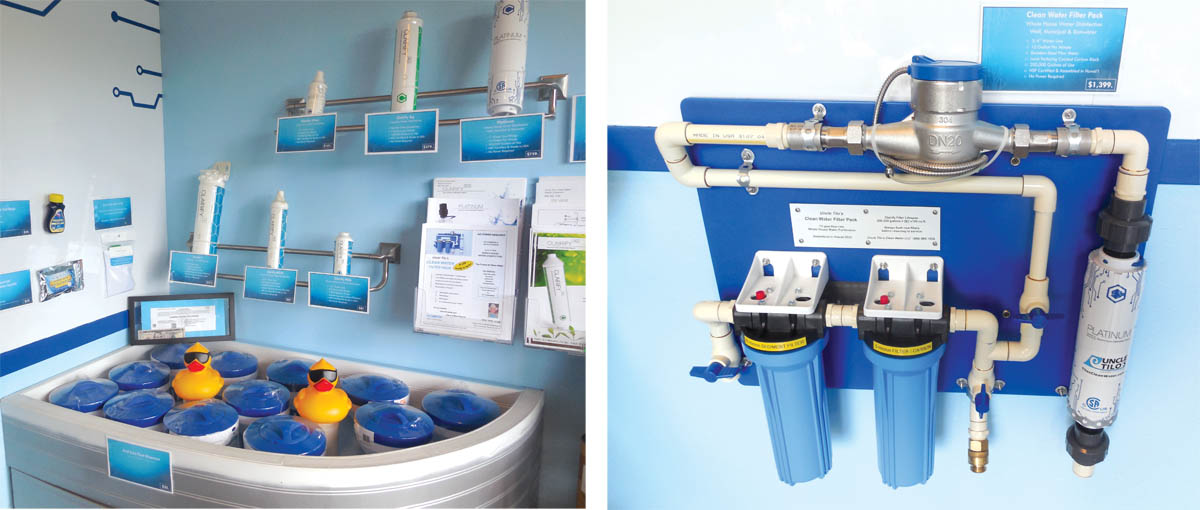
All photos courtesy of Stefan Verbano
For more information: tiloscleanwater.com
